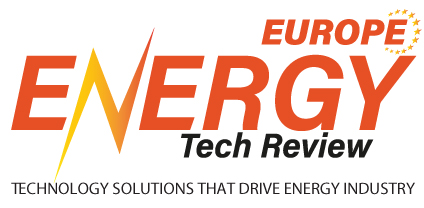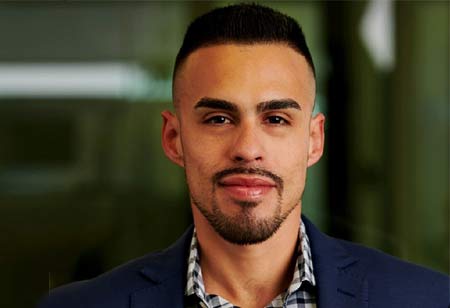It is undeniable that we live in times of an energy transition. More frequently, we see the rising popularity of both solar and wind in the news, performing above expectations in markets with deep penetration. On May 8th, 2022, the sun shone and the wind blew, allowing renewables to produce 103% of California’s electricity demand. We also saw how renewable energy provided 30 to 40% of the state's needed power as temperatures soared into the triple digits last summer in Texas. The reality is that how we design and operate our power grids has changed forever due to the presence of Renewables. Gone are the days when vertically integrated systems with one-way power flow were the norm. Distributed Energy Resources (DERs) are here to stay. Hence, all stakeholders involved in the energy sector have had to reshape how we think, talk, and, more importantly, how we design and operate our power grids and plants. Engineering is no exception to this group; therefore, the thought process of how engineering teams should perform and operate must evolve to meet the new industry and market needs.
At the center of any business decision, it is always imperative to understand what the business drivers and goals are. It would be very different to build an engineering team in an organization where the sole focus is selling engineering services as opposed to building an engineering team for an organization where operating power plants is the core business. In the latter, some or most of the engineering designs are expected to be outsourced, while in the former, engineering is expected to be performed in-house. Both types of organizations differ primarily in their business models; hence, this needs to be considered when shaping and defining the role of engineering. A successful foundation for any engineering team depends mainly on understanding the organization's goals and business model and using that input to acquire and shape the engineering skill sets needed to help the organization reach its goals.
Secondly, we can’t map engineering growth within an organization without understanding the market, industry trends, and temporal or permanent technical challenges. For instance, we have seen how, in the last few years in the renewables sector, we have faced challenges that have questioned our ability to build projects. For instance, the procurement of Main Power Transformers (MPTs) or any other type of High Voltage (HV) equipment has doubled and, in some cases, tripled in lead times due to their high demand and low supply in the market. This has made it difficult for project developers and EPCs to secure equipment on time for construction and energization. Engineering standardization around HV equipment can solve this industry-wide problem by specificizing flexible equipment that can be deployed across multiple projects rather than project-specific equipment customization. This can allow organizations to make critical business decisions to favor projects with higher returns in the event of equipment scarcity. Another example is the increasing minimum technical requirements now demanded by the National Reliability Electric Corporation (NERC), Independent System Operators (ISOs), and Transmission Operators (TOPs) when it comes to the performance of DERs during transient events in the Bulk Power System (BPS). The reality is that as the penetration of inverter-based resources increases and given the power-electronics nature of these types of resources, new characteristics for stability and control with power electronics are now available and need to be further understood. This calls for strong cooperation between inverter-based manufacturers, power plant operators, regulatory organizations, and industry-leading organizations, such as IEEE, to develop a technical framework for the expected operation of these types of plants. Just a few specific examples of these challenges can be the new high-speed data transient recording capabilities at both the inverter and plant level (a.k.a. substation) and the faster reaction times in the range of less than 500ms for frequency and voltage deviations on SCADA control systems. These new requirements are imposing significant challenges on all the engineering teams and, therefore, show how engineering innovation and, as in the previous equipment procurement example, engineering standardization are critical to engineering teams' success in leading organizations during this energy transition. Engineering organizations must have inner groups dedicated to innovation and standardization, as the former is needed to advance in the technology race. In contrast, the latter is needed for scalability and growth.
“Engineering organizations must have inner groups dedicated to innovation and standardization, as the former is needed to advance in the technology race”
Another item that drives successful engineering teams during this energy transition is cross-functional collaboration in an inclusive and open communication environment. This is probably one of the hardest of all. It is easier to organize one’s teams internally and create internal processes and standards, but calibrating how teams need to coordinate, exchange ideas, and collaborate with departments outside of engineering can be challenging. Part of the challenge for successful cross-functional collaboration is that, at first sight, the success of one team doesn’t necessarily translate to the success of the other. For instance, in an IPP organization, the role of the project developer is to successfully drive a project from an origination/conceptual stage to a solid pre-construction stage. To get there, the project developer must work with different engineering teams and sometimes needs to push engineering boundaries to get to that goal. This means not choosing the “best” engineered solution but going with what can work given the site-specific conditions. This requires, on the engineering side, an adaptation of the success criteria, where success is no longer achieving the “best” engineered solution but one that allows the project to move forward. However, there will be times when the desired solution will not work, regardless of how much money we want to throw at it. This is particularly true when facing national safety code violations, constructability challenges, regional regulations, and available equipment technical limitations. In this case, engineering teams must drive the conversation constructively by clearly outlining the rules and constraints but, more importantly, by emphasizing the alternative solutions. Engineering doesn’t need to be the enemy within organizations. Still, instead, a strong partner where projects are designed and built with robust and educated engineering decisions betted responsibly in a cross-functional way. Open communication, inclusivity, and respect are undoubtedly needed to foster an environment of cross-functional collaboration. We fail to promote a cross-collaboration culture if team members do not feel empowered and safe to express their ideas, thoughts, or questions. We can miss great ideas or pivotal moments in a brainstorming session if one of the team members does not feel empowered to raise their voice. Hence, engineering leaders must ensure team members believe in their power to drive discussions and help them understand that their active participation is respected, valued, and encouraged.
The energy transition is happening, and it is here to stay. Without a culture of engineering innovation, engineering standardization, and cross-functional engineering collaboration, organizations, whether big or small, cannot overcome the energy transition hurdles. Moreover, without promoting a culture of inclusion, respect, and open communications, those technical and non-technical hurdles will likely not be solved efficiently, eliminating the possibility of solid partnerships and cross-functional organizational collaboration.












